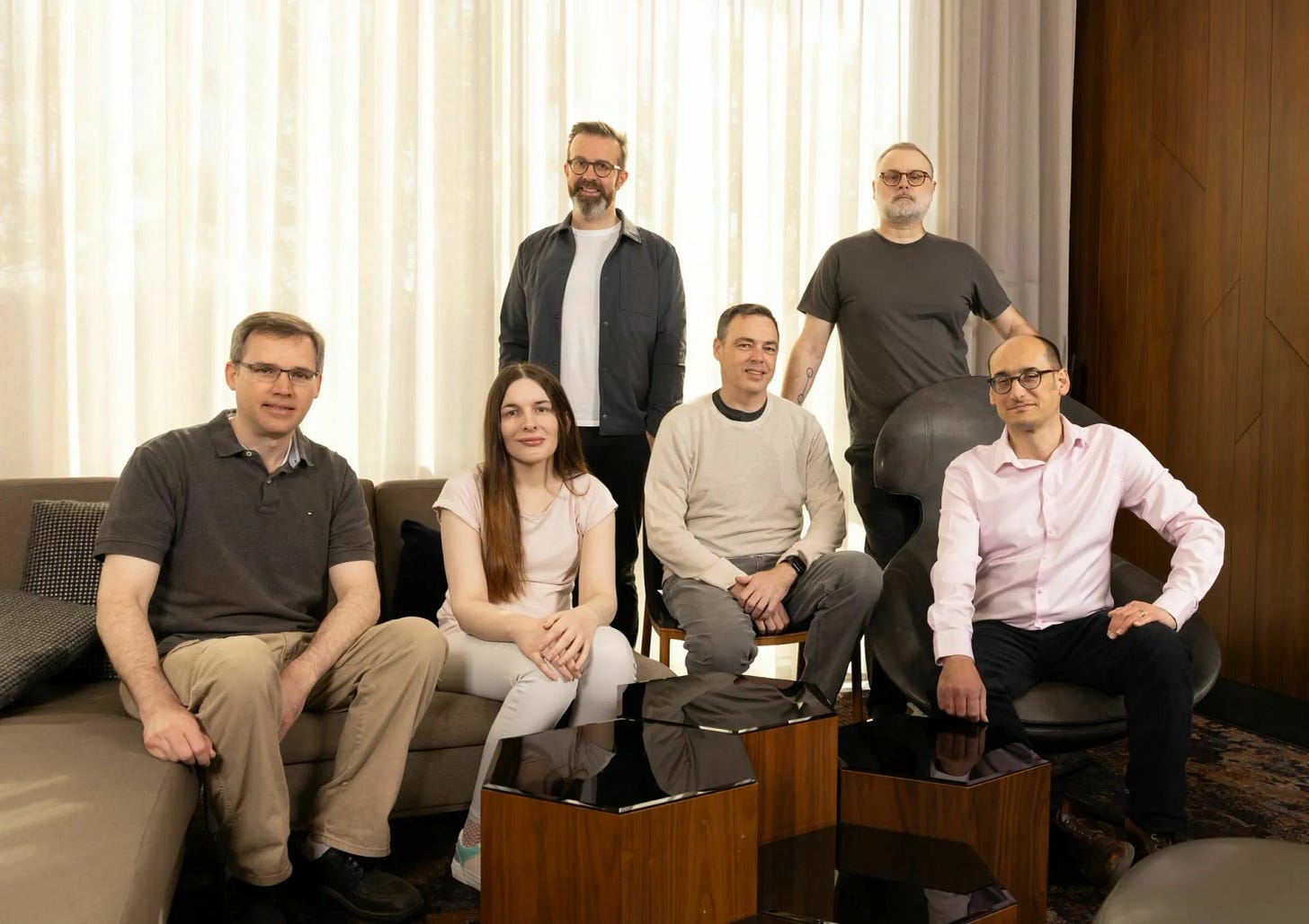Marketing from Zero to One: Deeptech Brand Marketing
How do you market a category you just invented?
In recent posts on Summary Judgement – Anduril vs Helsing and DefenceTech Battle Royale – I’ve focused on the Defence sector and the challenge of marketing in an old industry in a radically new way. But there’s another kind of marketing challenge that’s even harder: How do you market something that has never existed before?
So… You’ve Just Changed the World
If you’re leading a Deeptech company, there’s a good chance you’ve invented something that didn’t exist even a few years ago. Sure, the underlying physics may have existed for most of the age of the universe, but we humans might not have even conceived of it as an idea.
A new compute architecture. A breakthrough in materials science. A manufacturing process that bends physics just far enough to be useful. If this is your business, you’re not launching a product, you’re making a new assumption about how the world works.
Which means, whether you realise it or not, you’re creating a category.
Your invention doesn’t fit neatly into existing business paradigms, and that makes it hard to know how to tell its story: to customers, to potential hires, and to the wider world.
To add even more difficulty, if you’re really onto something new and incredible, everyone will probably think you’re crazy. They will persist in thinking that right up to the point you prove them wrong.
This post is about how to help things along.
Real World Challenges
These kinds of breakthroughs – new ways of doing things – are how we make the world better. But they’re hard to explain, hard to fund, and hard to sell. Because as much as people say they like innovation, they really don’t. New is scary, especially if you have vested interest in the old.
Here are two companies I’m familiar with that face exactly this challenge:

Vaire, a London-based semiconductor startup, isn’t just making a faster chip, they’re building a reversible computing architecture, which offers the potential for near zero energy compute. This is a challenge not just to Moore’s Law, but to the thermodynamic assumptions built into every processor today. This isn’t incremental innovation. It’s a redefinition of computation itself.
Endomag, a medical devices company from Cambridge, replaced radioactive tracers in breast cancer surgery with magnetic sensing — creating a safer, more scalable approach to tumour localisation. What started as a physics challenge became a new clinical standard, one that required surgeon education, regulatory approval, and trust-building at every level.
These companies are in very different stages of their lifecycle (Vaire is at Seed stage and Endomag was just acquired after many years of growth) but in both cases, these companies weren’t just launching products, they were proposing new defaults. And that makes the go-to-market strategy fundamentally different. You’re reframing assumptions rather than pitching features.
Inventing the future is hard. But getting the world to understand what you’ve invented? That’s where marketing – yes, marketing – comes in.
The Translation Problem
You’re fluent in equations, simulation environments, and specs. But most of your audience isn’t.
Yes, you’ll come across other engineers or scientists as you build your startup, but the vast majority of people who will influence your success like investors, OEM partners, talent, regulators, operate in different languages: narrative, positioning, risk, signal.
Most marketers can’t help much here. Not because they’re bad at what they do, but because what they do was built for other categories: SaaS, Fintech, Marketplaces, Consumer tech. In those worlds, marketing is mostly about optimisation over education, playbooks over principles.
That works when you’re launching a toothbrush. But when you’re trying to explain a new compute substrate, a novel fusion architecture, or a GPS alternative, achieving clarity is complexity.
You need simplification without dumbing down. You need translation without transmutation. And that’s rare.
“Why Bother This Early?”
It’s a fair question. At Seed stage, you’re juggling engineering debt, IP filings, funding gaps, and team formation. Marketing feels like a luxury, or worse, a distraction.
But you’re doing marketing whether you like it or not.
When you interview your next critical hire, the one who’s taking a 50% pay cut to bet on you, that’s marketing. When you pitch an OEM partner who doesn’t even know your category exists yet, that’s marketing too.
You’re not just marketing a product or a brand. You’re marketing a possibility. A vision of the future that smart people want to help build or that smart organisations can’t afford to ignore.
And in a noisy, capital-scarce market, the clearer story often wins. Not the louder one, the clearer one.
Good brand strategy doesn’t mean puffery or premature polish. It means making decisions: about how you describe what you do, what problem you solve, and why it matters. It’s cognitive infrastructure not a cosmetic makeover.
If you get this stuff right early, you’ll be better positioned to scale. You’ll raise faster. Hire better. You’ll accelerate the process of proving that your product is 10x better than what exists already.
Why Most Agencies Don’t Get Deeptech
Even if you’ve decided marketing matters, the next question is: who can help?
Most agencies can’t. And not because they don’t understand the science (though, sadly, this is often the case. It’s because they don’t know how to navigate uncertainty.
Agencies are built to help new brands and products to position themselves in existing markets or sell into existing demand curves. They know how to segment users, build funnels, test messages. If you’re launching a new product into a familiar category, they’re valuable.
But Deeptech doesn’t start with demand. It starts with disbelief.
Your first audience isn’t the buyer, it’s the believer. Someone with the imagination to take a leap, and the influence to bring others with them. For example, the iPod was a category leap made possible when Apple noticed Toshiba’s slimline hard drives and imagined what could happen if they met great design.
Most early marketing efforts fall flat because they’re either technically shallow or strategically generic. They weren’t designed for category invention. Because Deeptech is more than a vertical, it’s a mindset shift.
So What Does Marketing Actually Look Like?
Not like a 30-second slot on the Superbowl. (That comes when you’ve already won.)
You’re not buying billboards or chasing engagement on TikTok. In Deeptech, effective marketing often looks deceptively modest:
A peer-reviewed article that frames your tech in the ground-breaking way that captures scientific interest
A two-page deck that makes your R&D legible to a corporate partner
A trade press interview that lands exactly the right credibility signal in exactly the right vertical
Some of you may be thinking, “But that’s just PR, isn’t it?”
Indeed, but PR and Comms are forms of marketing. In this case, you’re using the craft of comms to execute a strategic brand play. These are precision outputs that deliver brand moments with strategic intent.
You don’t need more noise and volume. You need more intentionality and precision.
Case Study: DeepMind – Signalling Through Science and Spectacle

DeepMind didn’t market with ads. It marketed with papers.
From the beginning, it signalled ambition through scientific journals, earning credibility in the most demanding technical communities before the public even noticed. Doing this also helped Deepmind attract the very best people who were drawn to the idea of discovery, more so than salary.
Then came AlphaGo. Beating Lee Sedol in 2016 wasn’t just about gaming. It was a proof point that deep learning could master foresight, strategy, and uncertainty and do so from first principles.
By playing games, DeepMind was solving deceptively complex problems — and inviting the world to draw the analogy: if AI can navigate Go, what else might it navigate? Logistics, energy grids, protein folding.
Go wasn’t chosen by accident. It’s especially popular among the kinds of people DeepMind needed to reach: technical elites, researchers, investors, policymakers.
This wasn’t storytelling for clicks. It was theory-of-mind marketing, helping future customers see themselves in the solution.
Ironically, DeepMind was later overshadowed in cultural terms by OpenAI and ChatGPT. But it was DeepMind that rerouted the timeline. Before DeepMind, AI felt stuck in another winter. After DeepMind, the temperature changed.
Case Study: Fairchild Semiconductor – Invention as Industrial Movement

Before Silicon Valley was an idea, Fairchild Semiconductor was laying the foundation.
They didn’t market the transistor with splashy campaigns. They built legitimacy through application notes, engineering diagrams, and a growing network of trusted evangelists who spoke directly to system designers.
Fairchild’s true innovation wasn’t just the planar transistor, it was the industrialisation of semiconductor manufacturing as a scalable, standardised process. That wasn’t just engineering. It was persuasion, executed in silicon.
That mindset carried over to Intel, where Gordon Moore and Robert Noyce built chips, but beyond that, they built a model that became a marketing signal in its own right.
Moore’s Law wasn’t a physical law. It was a statement of intent and a public roadmap, one that aligned buyers, technologists, and investors around a shared tempo. The entire semiconductor cycle became, in effect, a long-range brand promise.
Why I Work on Deeptech
I’ve spent much of my career in marketing roles where the challenge was to make incremental gains in crowded categories — where strategy often meant slicing the salami ever thinner. New tone. New tagline. Same underlying story. It proved to be a great basis for understanding the fundamentals of marketing and branding in the most competitive environments.
But what drew me to Deeptech was the chance to do the opposite.
Deeptech founders imagine a world that does not exist… yet. As a marketer you get to try and bring that world to life.
This is blank-sheet-of-paper work. You’re not fighting for marginal territory, you’re helping define entirely new terrain. You’re not optimising a funnel, you’re building the conceptual frame that makes the funnel even make sense.
Deeptech forces first-principles thinking - for engineers and for marketers. You’re having to demonstrate, not just why your brand should exist, but your entire category. Because the product isn’t obvious, the positioning can’t be lazy. You have to earn attention with clarity, build trust with structure, and tell a story that’s technically honest and strategically sharp.
For me, that’s an exciting kind of challenge.
Invent the Future. Own the Category.
If this post spoke to you, chances are you’re already doing the hard part: building something unprecedented. That alone puts you in rare territory. But rarity cuts both ways. It makes you valuable if you can prove to the world you’re right. Until that time, you’ll probably be considered a bit crazy.
Brand strategy, when done right, isn’t about spin or style. It’s about building a bridge – from your internal clarity to the world’s external confusion.
This is the kind of problem I spend a lot of time thinking about.



